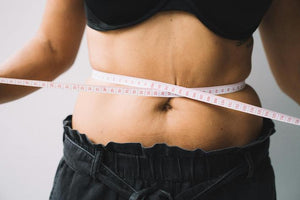Yes, we've heard it many times. We are constantly told that we should exercise for the sake of our health. This lifestyle recommendation is always at the top of every list - right after the recommendation to eat healthily. However, when you look at it more closely, it's no wonder that exercise is emphasized so much. A lack of physical activity comes with significant risks. Costs to your health and your finances. Plus, too little exercise is linked to a whole host of 'modern diseases', such as type 2 diabetes and cardiovascular disease. So let's take a look at the benefits of exercise.
A sad current state of affairs
Unfortunately, exercise is not on the agenda for many people. In the USA, only one in four adults and one in five schoolchildren achieve the recommended level of physical activity [1]. However, this is not just an American problem. Inadequate levels of physical activity are common worldwide, with almost two-thirds of adults and 80% of adolescents in Europe failing to achieve the minimum recommended level of physical activity [2].
Worse still:
Physical inactivity is associated with around 3 million deaths per year, as well as 6-10% of cases of serious non-communicable diseases [3].
In this blog post, we take a look at what exercise means for the body, which bodily functions it promotes and how the menstrual cycle affects energy levels.
We don't have a detailed training plan for you. Why? Because we are all unique. Not every workout will suit every person. But we hope that after reading this article you'll have some ideas about what you can do to move more and why it's important.
You'll also see that continuous blood glucose tracking can help you figure out how to best adjust your lifestyle (exercise, sleep, diet, and stress management) to get the most out of yourself.

Exercise: more than just a means of losing weight
We all know that exercise promotes weight loss , but it can do much more than just that. Exercise can reduce the incidence and severity of cardiovascular disease, improve strength and mobility, and even increase bone density. Also, exercising helps people sleep better and longer, which in turn can lead to better health.
Did you know? Physical inactivity is associated with not just one, not just two, but no less than 35 chronic diseases [4]. Studies even show a strong link between exercise and a lower mortality rate, regardless of the cause of death [5-7]. Increased physical activity has even been shown to slow the progression of Alzheimer's disease and reduce the risk of certain cancers [8].
Exercise can be particularly beneficial for women
Many women want to lose weight after pregnancy or menopause. Physical activity can be a valuable tool to achieve this goal.
What you may not know is that it also helps to maintain bone density and prevent osteoporosis, which hits women particularly hard after the menopause. In fact, the prevalence of osteoporosis is 3-4 times higher in women over the age of 50 than in men [9].
Women may find that the energy level for their workout correlates with the phases of their menstrual cycle. This can be explained by the changing hormone levels during the different menstrual phases [10].
The cycle can be divided into 4 main phases : menstruation or early follicular phase, late follicular phase, ovulation and luteal phase.
Menstruation
In the first phase, the menstrual phase, the level of the sex hormones oestrogen and progesterone is at its lowest. In the follicular phase, which marks the first half of the menstrual cycle, oestrogen levels gradually increase. During this phase, it can be easier to become active than in the weeks before. During the follicular phase, women's metabolism is very similar to that of men. A study has shown that women in a fasted state perform better in the follicular phase than in the luteal phase of the menstrual cycle.
Follicular phase
In the week following the end of menstruation, the late follicular phase, oestrogen and testosterone levels rise rapidly in preparation for ovulation (release of an egg from the ovary). This is the reason why energy levels and perceived strength can increase.
Ovulation or ovulation
Oestrogen levels peak around the time of ovulation. For most women, this is around two weeks before their next period. During the luteal phase, when oestrogen levels drop rapidly after ovulation and progesterone levels rise, women may feel more tired or sluggish than usual. However, this does not mean that they should not exercise. On the contrary, active exercise can lift your mood and give you more energy.
Luteal phase
In the week before the next period (late luteal phase), the female body needs more energy (it gains about 90-280 kcal). This higher amount of energy needed can lead to cravings and mood swings. It seems that estrogen is responsible for the increased energy intake during this phase. It has been hypothesized that estrogens reduce appetite and energy intake, and in the late luteal phase, estrogen reaches its lower levels. On the other hand, women find that their heart rate before exercise is higher in the second half of their cycle [11], which is due to the progesterone peak. It is also likely that physical exercise itself feels more strenuous. However, physical activity can help premenstrual symptoms (PMS) improve, even when energy levels are low.
In other words, women may find that their perceived energy levels and willingness to exercise change, but the immediate benefits of physical activity should be encouraging enough to at least take a few steps.

How our body adapts when we exercise
So we've talked about energy levels, but what actually happens to our bodies when we exercise?
When we exercise, our body adapts to the positive stress that exercise triggers. Yes, sport is stressful for our bodies. But in a positive way. This adaptation occurs in many ways: while it looks like only our muscles are working, in reality many other tissues and organs are working to support them. Every human being functions like an orchestra in which each instrument plays its part.
Exercise as an energy booster
Have you ever been in a situation where you are tired after a hard day's work, even though you were "only" sitting at your desk? We understand you, because exercising after a hard day doesn't sound very tempting, but.... More exercise actually gives you more energy! Or if you need some energy to start the day, it's been shown that exercising in the morning can be the key to waking up.
So the next time you feel tired after work, put on your gym clothes and get moving to resist the temptation of the couch.
Energy storage and weight loss
In addition to the energy boost, there are other benefits of physical activity:
You may have heard or experienced for yourself that you lose weight when you exercise but eat the same. Increased physical activity causes our body to accumulate less fat and use more of our existing fat for energy. This is especially true for moderate-intensity endurance training, as the heart rate is increased over a longer period of time.
During short periods of activity and high-intensity training, the muscles mainly rely on their own energy stores. However, if the load is maintained over a longer period of time, a greater supply of energy from outside the muscle is required. This is where the liver comes into play.
The liver and muscles use a well-controlled communication system to maintain metabolic balance during exercise. Both organs, together with the pancreas (the organ responsible for insulin secretion), are responsible for regulating blood sugar levels and insulin and keep the muscles going.
But that's not all. It's not just your metabolism, big muscles and blood sugar levels that benefit from exercise. The benefits of physical activity also extend to the cardiovascular system, improving the function of the endothelium – a thin membrane that lines the inside of the heart and blood vessels. Exercise lowers resting blood pressure and heart rate, improves blood flow, and enlarges the microvascular network by forming new blood vessels and arteries.

Exercise keeps the blood flowing
When you look at your blood report, you or your doctor will notice the following positive results if you exercise more:
- Lowering triglyceride levels, increasing HDL cholesterol levels (the good kind of cholesterol!) and reducing the ratio of LDL to HDL;
- Lowering blood pressure, improving cardiac flow and reducing blood clotting;
- Lower inflammation levels in the body.
These are all common risk factors for cardiovascular disease, and exercise has been shown to counteract these factors.
Improve your insulin sensitivity
However, regular exercise can affect more than just your heart health. Since we at Hello Inside are convinced that an optimal blood sugar level helps you to perform at your best, we would like to take a closer look at the connection between physical activity and your blood sugar level.
Blood sugar balance
Exercise has a big impact on your blood sugar levels, as it increases insulin sensitivity, among other things. High insulin sensitivity allows the body to utilize blood sugar more efficiently, and research shows that muscle insulin sensitivity is increased up to 48 hours after a single workout. So, exercise is a valuable alternative to medication when it comes to normalizing blood sugar levels.
However, it is important to remember that each person is unique and that blood glucose levels depend on a number of factors. The results of exercise can vary depending on the type, duration and intensity, as well as diet and general health. The interrelationships are complex, which is what makes blood glucose monitoring such an effective tool.
Here you can learn more about the adaptation process, your body during exercise and blood sugar levels.

How regular exercise improves your mental well-being
We've already talked about the benefits of exercise after a busy day. But we can't stress it enough. If you want to relieve stress , you can take a deep breath or meditate... or you can move! You may not have heard of it, but regular physical activity is actually associated with less anxiety and depression[12].
Still not convinced that exercising after a hard day's work will make you happier? Perhaps you should know that exercise helps to regulate the body's levels of stress hormones such as adrenaline, serotonin and cortisol [13], which are known to create tension, increase happiness and improve mood. On the other hand, adrenaline stimulates the production of endorphins, our body's natural painkiller and mood enhancer [14].
How much exercise is enough?
First of all: you don't have to run a marathon.
We hope this blog post has shown you that regular physical activity is one of the most important components of a healthy lifestyle. If you're just starting out with exercise, don't worry! The most important thing is to start slowly and take it easy. Your blood sugar levels and your long-term health will thank you.
Taking 3500 steps or more a day (at least 20 minutes of walking) is a good start to protecting your health and controlling your blood sugar levels. So a short walk after a meal can work wonders. And if you're more ambitious, just 150 minutes a week (that's 2.5 hours in total) of moderate to vigorous physical activity can reduce your risk of type 2 diabetes by 30%.[15] Just as different forms of physical activity have different effects on your heart rate and muscles, they also have different effects on your blood sugar levels.

Our tips
If you're not used to moving, here are a few tips to get you moving.
- Walks are a good start and are easy to incorporate while you run errands or go about your daily activities. How about getting off the bus/tram one stop earlier and walking home? Who says you always have to take the shortest route to the office? So why not take a little detour and see what's been going on in your neighborhood before you do your shopping?
- We're pretty sure you have a friend who would also like to be more active. Just give him or her a call and meet him or her for a walk instead of a coffee. You could even schedule regular meetings to help you establish a routine for your overall health.
- If you sit for a long time, you should get up more often to get a glass of water and walk around your workplace. Or walk around your apartment the next time you call your mother or girlfriend.
- Or maybe there's a sport that you enjoyed as a child that you haven't practiced for a long time. It's never too late to give it another go!
Be kind and patient with yourself, and remember that exercise doesn't have to be strenuous to be effective. Even a brisk walk in the morning or after dinner can make a big difference to your health, and you'll be surprised how much better you feel. It's not about being perfect, but there's always room for improvement when it comes to physical activity. Whether you're moving too much or too little, monitoring and understanding your blood sugar response will help you balance your unique and healthy lifestyle.
Whatever you do, don't forget: our bodies were created to move. If you keep this up, you are investing in your lifelong health.
_______
[1] Lack of Physical Activity. National Center for Chronic Disease Prevention and Health Promotion. Updated September 25, 2019. Accessed 09/14/2021. https://www.cdc.gov/chronicdisease/resources/publications/factsheets/physical-activity.htm
[2] Hallal PC, Andersen LB, Bull FC, et al. Global physical activity levels: surveillance progress, pitfalls, and prospects. Lancet. 2012;380(9838):247-257. doi:10.1016/S0140-6736(12)60646-1
[3] Lim SS, Vos T, Flaxman AD, et al. A comparative risk assessment of burden of disease and injury attributable to 67 risk factors and risk factor clusters in 21 regions, 1990-2010: a systematic analysis for the Global Burden of Disease Study 2010 [published correction appears in Lancet. 2013 Apr 13;381(9874):1276] [published correction appears in Lancet. 2013 Feb 23;381(9867):628. AlMazroa, Mohammad A [added]; Memish, Ziad A [added]]. Lancet. 2012;380(9859):2224-2260. doi:10.1016/S0140-6736(12)61766-8
[4] Booth FW, Roberts CK, Thyfault JP, Ruegsegger GN, Toedebusch RG. Role of Inactivity in Chronic Diseases: Evolutionary Insight and Pathophysiological Mechanisms. Physiol Rev. 2017;97(4):1351-1402. doi:10.1152/physrev.00019.2016
[5] Blair SN, Cheng Y, Holder JS. Is physical activity or physical fitness more important in defining health benefits? Med Sci Sports Exerc. 2001;33(6 Suppl):S379-S420. doi:10.1097/00005768-200106001-00007
[6] Kohl HW 3rd. Physical activity and cardiovascular disease: evidence for a dose response. Med Sci Sports Exerc. 2001;33(6 Suppl):S472-S494. doi:10.1097/00005768-200106001-00017
[7] Berlin JA, Colditz GA. A meta-analysis of physical activity in the prevention of coronary heart disease. Am J Epidemiol. 1990;132(4):612-628. doi:10.1093/oxfordjournals.aje.a115704
[8] Reiner M, Niermann C, Jekauc D, Woll A. Long-term health benefits of physical activity--a systematic review of longitudinal studies. BMC Public Health. 2013;13:813. published 2013 Sep 8. doi:10.1186/1471-2458-13-813
[9] Bandela V, Munagapati B, Karnati RK, Venkata GR, Nidudhur SR. Osteoporosis: Its Prosthodontic Considerations - A Review. J Clin Diagn Res. 2015;9(12):ZE01-ZE4. doi:10.7860/JCDR/2015/14275.6874
[10] Davidsen L, Vistisen B, Astrup A. Impact of the menstrual cycle on determinants of energy balance: a putative role in weight loss attempts. Int J Obes (Lond). 2007;31(12):1777-1785. doi:10.1038/sj.ijo.0803699
[11] Bandyopadhyay A, Dalui R. Endurance capacity and cardiorespiratory responses in sedentary females during different phases of menstrual cycle. Kathmandu Univ Med J (KUMJ). 2012;10(40):25-29. doi:10.3126/kumj.v10i4.10990
[12] Mammen G, Faulkner G. Physical activity and the prevention of depression: a systematic review of prospective studies. Am J Prev Med. 2013;45(5):649-657. doi:10.1016/j.amepre.2013.08.001
[13] Sul, S., Moon, H. Changes in affect from mid-intensity exercise. J Incl Phenom Macrocycl Chem (2021). https://doi.org/10.1007/s10847-021-01077-3
[14] Boecker H, Sprenger T, Spilker ME, et al. The runner's high: opioidergic mechanisms in the human brain. Cereb Cortex. 2008;18(11):2523-2531. doi:10.1093/cercor/bhn013
[15] Tudor-Locke C, Schuna JM Jr. Steps to preventing type 2 diabetes: exercise, walk more, or sit less?. Front Endocrinol (Lausanne). 2012;3:142. Published 2012 Nov 19. doi:10.3389/fendo.2012.00142






